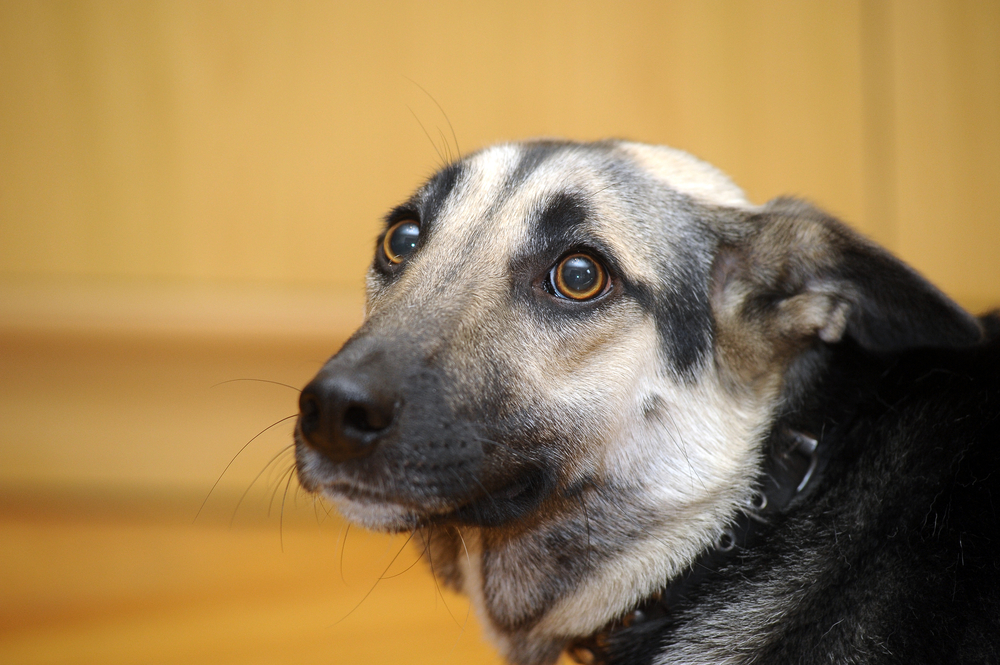It had been a long day, working with cases back to back of dogs displaying significant fear. One client was angry. Two were in tears. And one couple bickered constantly about the severity of the dog’s problem. As a professional dog trainer, I help dogs overcome fear. But it’s not just the dogs dealing with heavy emotions.
Living with a dog who is afraid is a challenge. It’s exhausting. It’s heartbreaking. It can make you angry. You feel like you’re making progress, only to be crushed by defeat when your dog regresses. You feel guilty. You just want to help your dog, and it’s so hard.
Nicole Wilde, canine behavior specialist and author of “Help for Your Fearful Dog,” explains: “There is a helpless feeling that comes with not being able to convey to your dog that there is nothing to fear. And seeing your dog shaking, panting, cringing, or showing other signs of fear can be painful. No one wants their dog to suffer, and yet that can be the daily reality for owners of fearful dogs, especially those who are empathetic. In addition to feeling helpless, owners can also become frustrated with how long it can take to see the results of behavior modification protocols. There’s no way around having to work through each gradual, incremental step. It takes time to truly change a dog’s underlying emotional state. Patience is key.”
Put to the Test
It’s easy for your patience to be tested, especially when others don’t seem to understand, even your own family. I once worked with a couple who adopted a skittish former Puerto Rican street dog from a local humane society. Pepper immediately bonded with the woman but would have nothing to do with her husband. It was clear the man resented Pepper. I saw right through his gruff demeanor and realized this dog lover actually was crushed the dog didn’t love him back. His feelings were hurt. So he was angry, which made Pepper even more afraid of him. It also annoyed his wife, who wanted her husband to be more understanding. Between Pepper’s stress, the wife’s frustration, and the husband’s resentment, it was a very emotional household!
The husband didn’t understand why he was so frightening to his new dog. He’d had dogs all his life; why was he suddenly so scary? Fear doesn’t always make sense.
Wilde says: “It can be surprising when you have a dog who displays confidence in most situations but becomes fearful in others, especially if those fears seem strange or random. My dog Sierra is very confident and normally has my other dog Bodhi under her paw. But whenever he develops the hiccups, she runs and hides behind me. Like Sierra, some dogs don’t show fear in typical fear-producing situations, for example, the vacuum cleaner or a gardener’s leaf blower, but do become afraid in others. Owners may be surprised at the extent of a dog’s fearful reaction and at the symptoms manifested such as destruction, barking, or cowering. Also, if a dog is cornered and the fight or flight instinct is engaged, a fearful dog’s seemingly aggressive behavior may come as a complete surprise.”
Emotional Rescue
Living with a fearful dog is like riding a rollercoaster, except you never know when you can get off the ride. “Above all, be kind and be patient,” Wilde counsels. “Your dog would surely prefer not to be feeling this way. Although canine fear issues can be frustrating for us, your dog can’t help it. He looks to you as his leader, his family, his safety net, and his comforter. Research all you can on the subject and do whatever you’re able to help your dog. It takes time to change emotional reactions, especially if they’ve been long entrenched in a dog’s psyche. It is crucial that you take it slow and remain patient. Manage fear-producing situations as best you can while implementing science-based, gentle behavior modification protocols.”
You want desperately to help your dog, but don’t forget to take time for yourself. Know that others are on the same ride. Just as your dog is entitled to her fear, you’re entitled to your emotions, too. Be patient with your dog, and with yourself. When possible, consult a board-certified veterinary behaviorist or other credentialed behavior expert—ideally one who is Fear Free Certified—to find ways to help your dog have a happier, less anxious life.
This article was reviewed/edited by board-certified veterinary behaviorist Dr. Kenneth Martin and/or veterinary technician specialist in behavior Debbie Martin, LVT.








